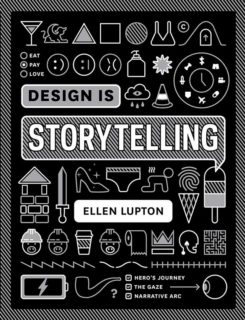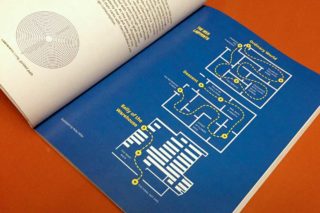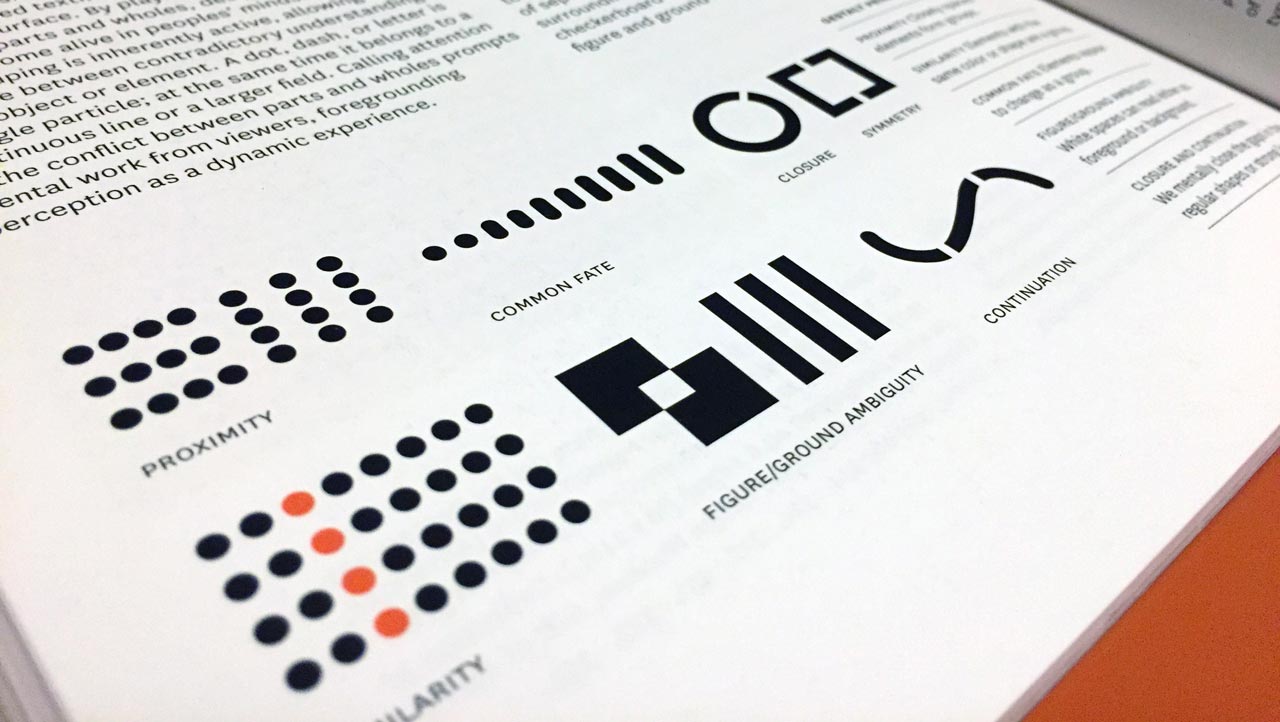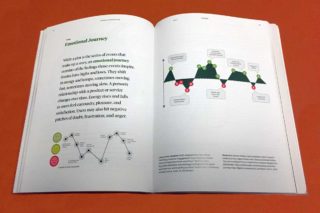Ellen Lupton’s book is a colorful primer on contemporary design thinking
I was a little skeptical of Design is Storytelling when it was released late last year… largely because of its title. Storytelling is a design buzzword that has become fairly ubiquitous: overused and generally unearned. I was once on a conference call with a media firm whose partners differentiated themselves as ‘digital storytellers.’ Well, aren’t we all…?
Recently, though, I came across the book in person, and was intrigued by its structure and its abundant, colorful illustrations. I decided to give it a try, and see if it could convince me of its title claim.
 The book’s author, Ellen Lupton, is senior curator of contemporary design at the Cooper Hewitt, and a prolific writer as well, having authored Graphic Design: The New Basics and Thinking With Type. She positions Design is Storytelling as a workbook of sorts, a “playbook for creative thinking.” The book’s structure supports this, presenting a series of tools for design split into three thematic ‘Acts’: Action, Emotion, and Sensation.
The book’s author, Ellen Lupton, is senior curator of contemporary design at the Cooper Hewitt, and a prolific writer as well, having authored Graphic Design: The New Basics and Thinking With Type. She positions Design is Storytelling as a workbook of sorts, a “playbook for creative thinking.” The book’s structure supports this, presenting a series of tools for design split into three thematic ‘Acts’: Action, Emotion, and Sensation.
The Action section focuses largely on user-experience design. Here Lupton presents techniques such as storyboarding and speculative design, imploring readers to consider how design fits into the narrative context of a user’s journey.
In Emotion, Lupton covers a diversity of topics, including experience design, user personae, co-creation techniques, and color. The content here was interesting, though its connection to the theme of emotion seemed a bit tenuous.
Finally, the Sensation act focuses on behavioral economics and sensory perception, and identifies ways designers can manipulate the latter (for good and bad) to ‘nudge’ users toward certain behaviors and choices.
The writing throughout is clear and concise (and a useful addendum provides basic writing tips for designers). The book is at its best when it gets specific; the more generic passages have a tendency to devolve into buzzwords, softening their impact. I re-read a few such passages when I thought I’d missed their point, only to find that there wasn’t much there to begin with.
For the most part, the tools presented here will be familiar to experienced designers. A few were new to me: the Cone of Plausibility, a tool developed for military use, is a method of predicting and visualizing future scenarios – good, bad, and unexpected. And I was fascinated by the notion of Gestalt grouping, which refers to the instinct of the brain to seek patterns and order, perceiving a single group rather than a series of discreet parts. This is something I’ve thought about a lot, but never, til now, had the vocabulary to describe.
My dilemma with many of the tools is that they’re not necessarily ‘usable’ processes – many of them (The Experience Economy, Multisensory Design) function more as frameworks, and there’s no clear sense of how a young designer might apply them to a design challenge; they’re simply things to ‘be aware of.’ I think the book would have benefited by converting some of these concepts into more clearly articulated techniques; as such, they come across as mechanisms more suited to rationalizing existing designs than to generating new designs.
A related problem is the lack of real-world examples. A section on the Emotional Journey illustrates its concept by plotting out the tale of Cinderella into a whimsical line chart… but it would have been more useful to see how an emotional journey informed an actual design process. Elsewhere in the book, the Hero’s Journey is exemplified through the floorplan of an Ikea store’s consumer path. This is a bit more tangible, but again, it’s presented as a way to understand Ikea’s design retroactively, not as a mechanism used to help design Ikea.
Throughout, the book includes fascinating anecdotes: The ‘femininization’ of the color pink attained full force with the reveal of Mamie Eisenhower’s pink inauguration dress. People eat more M&Ms and Jelly Beans if the colors are mixed up, due to an unconscious (and inaccurate) perception that the variety makes them taste better. And as painful as it may sound, a Russian scientist once attached mirrors to test-subjects’ eyelids using suction cups – to perform the first eye-tracking studies more than fifty years ago.
These colorful details are supported by an abundant assortment of illustrations, ranging from visual puns to charts and graphs, many of them built upon the aforementioned fairy tale themes. The illustrations make the book quite accessible, though they sometimes interrupt the flow of the book, slowing the reader down with their shifts of voice and tone.
 The book’s first chapter begins as Lupton is confronted by the famed graphic designer Stefan Sagmeister’s claim that storytelling is a “mantle of bullshit” used by designers to promote and amplify their own work. Did she convince me otherwise?
The book’s first chapter begins as Lupton is confronted by the famed graphic designer Stefan Sagmeister’s claim that storytelling is a “mantle of bullshit” used by designers to promote and amplify their own work. Did she convince me otherwise?
To put it simply, no. Some fantastic design incorporates elements of storytelling, of course, but many designs use storytelling lazily or poorly. If all design is storytelling simply because it is part of a user’s narrative experience, as posited here, then everything is storytelling, and the phrase becomes meaningless.
Lupton’s book may not have much to offer to experienced designers, but it would make a great addition to a syllabus for design thinking – and it could be just as useful to business students as art students. Her big-picture approach to design, incorporating problem-solving, emotion, influence, and yes, narrative storytelling, provides solid connections between the ‘why’ and ‘how’ of design theory. I only wish it had connected this theory to practice, so that readers could better understand how high-level design thinking can be a creative tool, and not simply a framework for design criticism.



